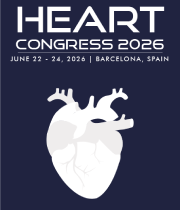Title : Driving guidance following electrophysiology procedures
Abstract:
Background: Timely and accurate communication of the United Kingdom’s Driver and Vehicle Licencing Agency (DVLA) guidance is essential for patient safety following emergency electrophysiology (EP) procedures. Observations within our tertiary care centre suggested inconsistent documentation of driving restrictions, prompting a quality improvement project (QIP) to evaluate current practice and implement targeted interventions.
Method: The first audit cycle reviewed 25 patients who underwent emergency EP procedures between January-March 2025. Documentation of driving status, DVLA guidance on the trust-based electronic noting system, Patient Information and Clinical Summary (PICS), and DVLA advice in discharge letters were assessed. A comparison cohort of 25 elective EP patients from the same period was also analysed. Following initial findings, an intervention consisting of resident-doctor teaching sessions and placement of visual reminder posters on the ward was introduced. A second audit cycle reviewed 27 emergency EP patients between August-November 2025.
Results: Initial audit findings demonstrated suboptimal documentation in emergency EP patients, with driving status recorded in 36%, DVLA guidance on PICS in 27% and DVLA guidance in discharge letters in 18%. Documentation rates were notably higher in the elective EP patients (86% for both PICS and discharge letters). Following the intervention, the second cycle demonstrated substantial improvements: documented driving statis increased to 55.6%, DVLA guidance on PICS to 70.3%, and DVLA guidance on discharge letter to 54.2%.
Conclusion: Targeted education and clear visual prompts significantly improved the documentation of DVLA guidance for emergency EP patients. This QIP highlights the effectiveness of simple, low-cost interventions in enhancing patient communication and safety following electrophysiology procedures. Further work will focus on sustaining improvements and expanding standardised documentation practices across EP services.




